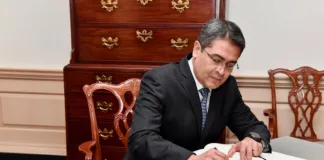Most news outlets rushed to cover the Alaska meeting with headlines like “Trump and Putin praise each other”—and little else. That’s the familiar “he said, she said” cycle.
At 3 Narratives, we do things differently. We connect today’s surface-level events to deep historical patterns, probabilities of land return, and the dynamics of our nuclear, interconnected world. That’s the kind of context people don’t usually get—and the kind that helps us ask: what happens next?
At Joint Base Elmendorf–Richardson in Anchorage, the Trump–Putin meeting was brief, symbolic, and light on substance. Yet what follows could shape the future of Ukraine, NATO, and global security. To make sense of what may come next, we offer three grounded narratives.
Narrative One: History Suggests Land Is Rarely Returned
Across centuries, conquerors seldom relinquish territory voluntarily. Empires like Rome, the Ottomans, or modern aggressors typically retain gains—at least for a generation.
There are notable exceptions:
- The Treaty of Ghent (1814) ended the War of 1812 with both sides reverting to pre-war borders—no territorial changes endured.
- After the Byzantine–Sasanian War (602–628), Persia returned vast conquests—much of Armenia and Mesopotamia—to Byzantium, restoring the prior borders. (source)
Despite these cases, they remain rare. By this measure, Ukraine reclaiming all occupied territories seems highly unlikely.
Narrative Two: Modern Politics Change the Equation
Today’s world is fundamentally different from that of ancient empires. Nuclear weapons, NATO, global economies, and the United Nations raise the cost of conquest dramatically.
While I’ve yet to find a precise, up-to-date figure stating “75 percent” of territorial wars ended in accommodation, historical trends do show that many such conflicts conclude through negotiated settlements rather than outright annexation.
So what does this mean for Ukraine? Full restoration may be unrealistic. But partial recovery—territories like Kherson, parts of Donetsk, or other defensible regions—remains within the realm of possibility. Conversely, Crimea, settled under Russian control since 2014, is far less likely to return.
Narrative Three: Power Sometimes Stops Itself
History reminds us that sometimes, even powerful leaders pause—not because they lose, but because they choose restraint.
- Ashoka the Great renounced further expansion after the brutal war of Kalinga and embraced peace.
- Hadrian, rather than push Rome beyond its means, fortified the empire’s borders instead of pursuing new conquests.
Could Putin reach a similar calculation? Not for moral reasons, but because the cost of holding extensive territory—economic sanctions, military drain, and diplomatic isolation—might eventually outweigh any perceived gain.
The Alaska Meeting Leaves Us Guessing
The Trump–Putin conference in Alaska provided no roadmap. Trump praised Putin. Putin praised Trump. The media raced between criticism and celebration.
Yet history, modern deterrence, and geopolitical realities suggest a clearer insight: peace, if it arrives, will likely emerge through incremental, negotiated steps—not sweeping victories.
Two sides. One story. You make the third.

[…] I’ve explored in earlier reflections on trust and communication and resilience in hard times, the real breakthroughs often happen when we listen rather than […]
[…] argue that the Commission left too many questions unanswered. Why did Building 7 fall? Did foreign governments know more than they admitted? Was Iraq’s […]
I am looking forward to a revision.
[…] — a rhetorical pivot that may signal the death of the Alaska peace deal and the dawn of a new, harder phase of negotiations. Alaska Summit/ […]
What do you think is next? Will there ever be peace in Ukraine?
[…] Related reading: Sudan’s Silent War | Alaska Summit […]
How does a drug company move its product from $28,000 to $40?
[…] — local police. For some, that would read as restored order; for others, an occupation. The unanswered questions are operational and civic: How would rules for troop engagement be set? Where would civilian […]